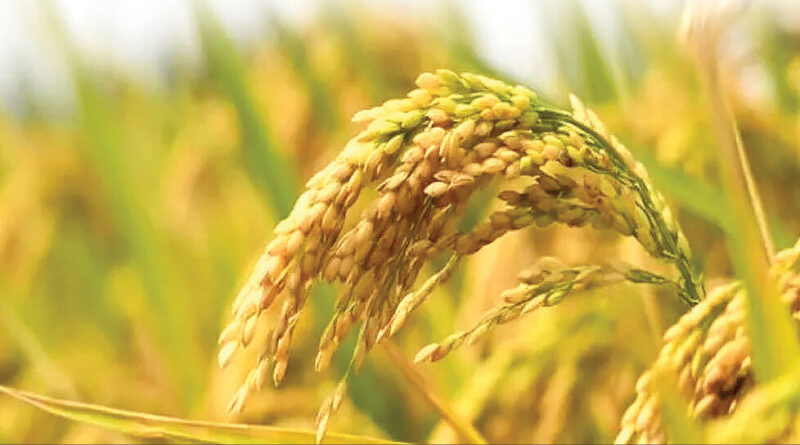Explained: The challenges in curbing cultivation of a banned rice variety in Punjab
By Anju Agnihotri Chaba
Punjab’s paddy farmers have started sowing seeds for this year’s kharif season, even as the high-yield, long-duration growth variety PUSA-44 has been banned in the state since last year.
Chief Minister Bhagwant Mann also claimed recently that the government managed to decrease area under PUSA-44 cultivation in 2023 as compared to 2022. This reportedly saved 5 billion cusecs of water, given its higher irrigation needs, and Rs. 477 crores through reduced power consumption.
However, preventing farmers from sowing PUSA-44 and two other non-recommended long-duration varieties could prove quite challenging in many districts. We explain.
First, why did Punjab ban PUSA-44?
In October 2023, the Punjab government banned PUSA-44. Cultivation of other varieties, such as Peeli PUSA and Dogar PUSA, has also been discouraged as they take between 158 to 162 days to grow, from sowing nursery to harvesting.
The longer duration means five to six extra cycles of irrigation, all while Punjab faces severe groundwater depletion. Moreover, this variety is also known to exacerbate the issue of stubble burning in the state. The straw stubble or residue of the rice crop planted in the kharif season (from July to October) is left in the fields as the winter crops (for the rabi season from November to March) are set to be planted.
To clear their fields in time for planting the next season’s crops, farmers burn the stubble. This, along with wind movements and other factors, contributes greatly to winter pollution in northern India.
What makes the three varieties attractive to farmers is their higher yield of around 32 to 36 quintals per acre, against 30 to 31 quintals of the regular varieties. Farmers also get Minimum Support Price, or a guaranteed minimum price from the government, for selling paddy. Simply, higher yield equals higher incomes.
Which districts see major cultivation of long-duration varieties?
The combined area of Peeli PUSA and Dogar PUSA in Punjab accounts for around 6% of the total paddy area. However, in some districts, it goes up to 20 to 24%.
Although Punjab has witnessed an overall decrease in the area under PUSA-44 this year compared to the last, floods in the state likely had a role to play. It led to farmers transplanting paddy nurseries (smaller plants) in August, well after the usual period of June to early July. Consequently, farmers opted for short-duration paddy varieties to ensure timely cultivation.
There are approximately a dozen districts in Punjab where the varieties are grown in many areas. These include Barnala, Sangrur, Ludhiana, Moga, Jalandhar, Bathinda, Faridkot, Patiala, Muktsar Sahib, Mansa, Fatehgarh Sahib, Kapurthala, etc.
According to data collected by Punjab Agricultural University (PAU) in Ludhiana, the Barnala district saw PUSA-44 sown on 56.16% of the total paddy area, compared to 54.84% last year. Additionally, Barnala witnessed a rise to 22.21% area under Peeli PUSA from 15.81% last year. Together, they constitute over 78% of the paddy area here.
Similarly, Sangrur recorded 43.09% area under PUSA-44 and 5.48% under Peeli PUSA. Moga recorded 31.22% under PUSA-44 and 17.34% under Dogar PUSA. Ferozepur and Rupnagar also saw an increase.
How effective can the ban be?
Barnala-based farmer Sham Singh said, “Even if the government bans the sale of PUSA-44 seeds, it wouldn’t significantly impact farmers because every farmer who sows them keeps the seeds for the next season, and many seed multiplying stores have already sold the seeds to interested farmers.”
He said the decision on continuing the cultivation ultimately lies with the farmer.
Acknowledging the challenge, a Chief Agriculture Officer from Punjab said, “Achieving a sea change in districts like Barnala, Sangrur, and Moga, where a significant portion of farmers rely on these varieties for almost 50% of the total paddy area, cannot be accomplished overnight. Changing farmers’ mindsets will require time.”
Dr. Amrik Singh, Faridkot Chief Agriculture Officer, said these unsustainable varieties have long been cautioned against by the government and agricultural experts. Ludhiana’s PAU has recommended shorter-duration paddy varieties that are not only more water-efficient but also offer decent yields and better stubble management.
Talwinder Singh, a farmer from Jalandhar, said farmers are aware of the adverse effects of PUSA-44 but stressed the need for guidance and public awareness about the benefits of short-duration varieties over longer ones.
This article has been republished from The Indian Express.

